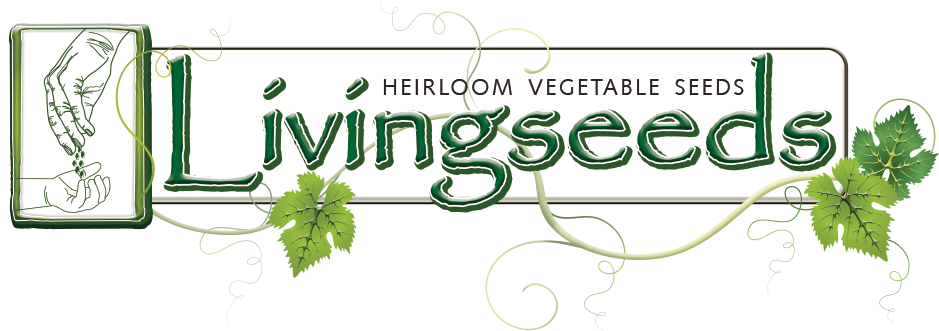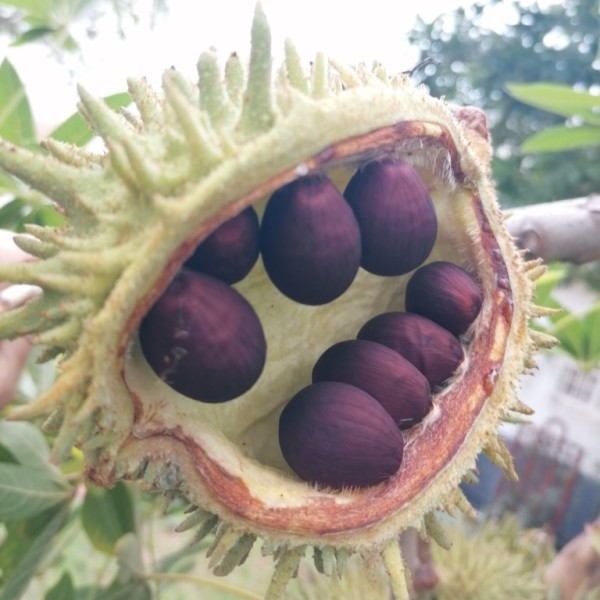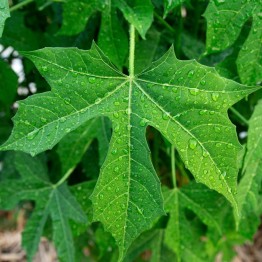Sterculia murex
The Lowveld Chestnut is a fascinating species restricted in nature to the terrain surrounding the granite inselbergs in and between Nelspruit and Barberton with some populations in the Kruger Park. In habitat they can be very common, but they are a species of restricted range and relatively uncommon in cultivation.
The trees are a bit reminiscent of a cabbage tree (Cussonia sp.) in looks, with large, five lobed leaves. The trees can get large but in their younger years are fairly slender without much spread to the crown. The roots are large and fleshy, and can be damaging to paving.
A “blossom tree”, the species bears lovely yellow spotted with orange flowers in spring for about two weeks. If the winter has been cool and sufficiently dry the blossoms will appear on bare branches, but if the tree has had winter water it is inclined to be semi-evergreen, lessening the show.
The tree gets its name from its large, spiked fruit which look a little like those of a “true” chestnut, Castanea sp., as well as its edible, large, sweet and oily seeds, or nuts, which are roasted for consumption in much the same was as the European winter delicacy.
Interestingly enough, the latin species name murex, derives from the latin name for a spiked war club, also referring to the fruit.
The trees can bear very heavily, and the fruit are shed in February/March over a short period which co-insides with the wettest time in the plant’s habitat’s rainy season.
Nuts are very heavily predated on in habitat, as they are delicious both raw and cooked. They have soft, leathery shells that offer little protection against herbivores, and if roasted in a pan or over the coals of a fire, will “pop” slightly, showing the flesh of the seed.
A word of caution, the inner rim of the fruit bears short, irritating hairs which necessitates some care when harvesting the nuts.
Cultivation:
The tree is adaptable but prefers a warm climate with good summer rain. It bears best if given a good dry season, and is adapted to long periods of drought in winter.
It does not appreciate temperatures much below 0C but can re-sprout from its succulent rootstock (caudex) if cut completely back by black frost as a seedling. Adult trees can take colder winters.
Very fast growing the tree can start bearing pods in its fifth year, possibly earlier if fertilized heavily.
Growing from seed is, as mentioned quirky, and one needs to understand this trees adaptions to its unique habitat to get an appreciation of why the seeds do what they do.
When shed, the seed dries out and dies in hours sometimes, and that is due to the fact that the seed shell has no water holding ability whatsoever. In habitat the seed would have been shed in almost monsoonal rain and, if lucky, be flung between rocks by the breaking up of the falling fruit, where it will be protected from predation long enough to germinate. Which it does and completes in a handful of days.
Also when trying to propagate this species from hours old seed in Pretoria, I almost discarded seedling trays full of empty seed shells thinking they had been eaten by rodents (which can happen), but by pure luck figured out what was happening here.
The seed had germinated at lightening speed and made storage organs (an enlarged rootstock or succulent caudex), and thick, fleshy roots as deep as possible in the trays. These rested a full winter before shooting the above-ground parts of the young trees.
So in habitat, these seeds are optimized to “get underground” as fast as possible to escape being eaten, and the fires and drought that follow in winter.
Nature is amazing.
Sold as 3 caudices
Very Limited Stocks
Lowveld Chestnut
- Product Code: 352-0030
- Availability: Out Of Stock
-
R154.56
Related Products
Chayamansa Tree Spinach
Tree Spinach / Chaya Cnidoscolus aconitifolius var. ‘Chayamansa’ *** SEASONAL PRODUCT ***Chayamansa..
R101.43




